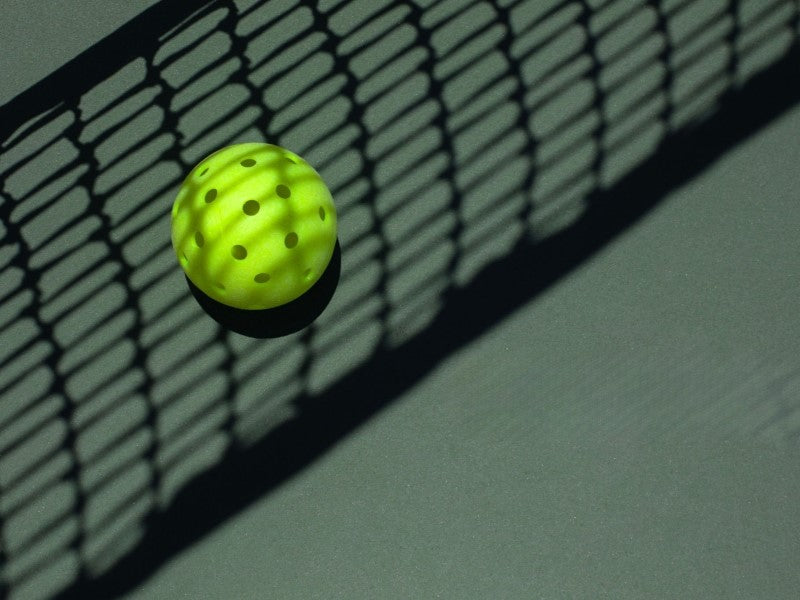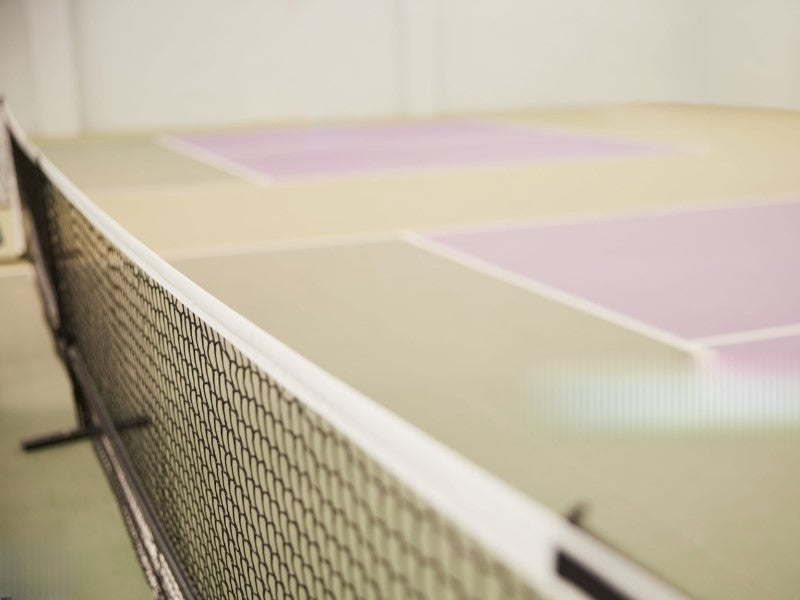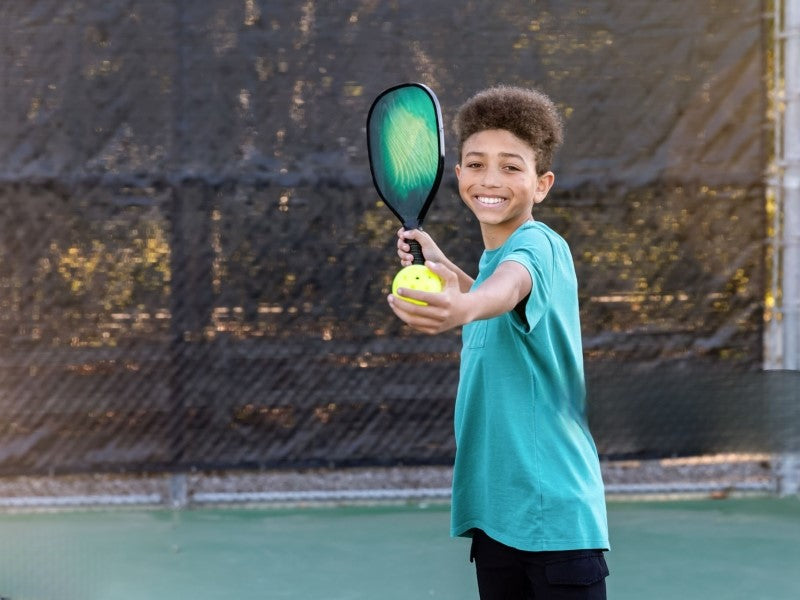Pickleball is fun, fast-paced, and surprisingly addictive—but to play well, especially as a beginner, you need more than just enthusiasm. Mastering the fundamentals early on can make a huge difference in how quickly you improve and enjoy the game. Whether you're trying to get better at dinking, serving, or positioning yourself on the court, targeted drills are one of the fastest ways to level up.
1. Paddle Tap Drill
Purpose: Build paddle control and hand-eye coordination.
How to Do It: Simply bounce the ball on your paddle repeatedly. Begin with your forehand, then shift to your backhand. Challenge yourself to make as many consecutive taps as possible without letting the ball fall.
Why It Works: This easy drill improves feel and precision. It also helps beginners get used to how the paddle moves with the ball.
Pro Tip: To increase difficulty and mimic on-court movement, try tapping while walking at a slow pace.
2. Wall Rally Drill
Purpose: Improve timing, reflexes, and paddle angle control.
How to Do It: Stand 5–7 feet from a wall and hit the ball repeatedly against it using forehand and backhand strokes. Try to keep a rally going for at least 30 hits.
Why It Works: Wall practice is excellent for solo training and simulates real rally conditions.
Pro Tip: Mark the wall with tape to mimic net height for more realistic practice.
3. Dink Practice at the Kitchen Line
Purpose: Develop soft hands and consistency in the non-volley zone.
How to Do It: Stand at the kitchen line and gently dink the ball back and forth with a partner. Concentrate on keeping the ball low and placing it in the opponent’s kitchen area.
Why It Works: Dinking is one of the most essential skills in pickleball. Practicing it helps you win longer rallies.
Pro Tip: Use a relaxed grip and keep your paddle out front to maintain control.
4. Serve-to-Target Drill
Purpose: Improve serve accuracy and placement.
How to Do It: Place cones or objects in different areas of the service box. Practice aiming for these targets repeatedly. Vary your targets: deep corner, short middle, or wide angle.
Why It Works: Learning how to place your serve strategically puts your opponent on the defensive.
Pro Tip: Focus on consistent toss height and clean paddle contact rather than power.
5. Cross-Court Dink Drill
Purpose: Learn directional control and patience during dinks.
How to Do It: Stand diagonally across from your partner and dink only to the opposite corner. Keep the ball low and aim for control.
Why It Works: Practicing cross-court dinks helps develop better angles and positioning awareness.
Pro Tip: Gradually build up to longer exchanges (20+ shots) to enhance muscle memory.

6. Third Shot Drop Drill
Purpose: Learn to transition from baseline to net with control.
How to Do It: From the baseline, drop the ball softly into the opponent’s kitchen and then move forward. Repeat until you reach the kitchen line.
Why It Works: The third shot drop is essential in doubles strategy, allowing you to safely approach the net.
Pro Tip: Focus on lift and arc. It’s better to hit high and land soft than go too flat and hit the net.
7. Volley Reaction Drill
Purpose: Improve reflexes and paddle readiness at the net.
How to Do It: Stand at the kitchen line with a partner and volley the ball back and forth without letting it bounce. Keep your paddle up and eyes focused.
Why It Works: Volleys happen quickly in pickleball, so this drill trains your reaction time and positioning.
Pro Tip: Don’t swing—just punch or block the ball with compact movements.
8. Footwork Ladder or Cone Drill
Purpose: Build foot speed, balance, and court coverage.
How to Do It: Use a ladder or cones to practice lateral shuffles, quick steps, and pivot turns. Combine movement with simulated paddle strokes.
Why It Works: Good footwork helps you reach shots earlier and set up better angles.
Pro Tip: Stay light on your toes and keep knees bent for explosive movement.
9. Return of Serve Drill
Purpose: Practice consistency and depth on return shots.
How to Do It: Have your partner serve repeatedly while you return cross-court or down the line. Focus on placing the return deep and high enough to prevent attack.
Why It Works: A deep return makes it harder for the serving team to get to the net quickly.
Pro Tip: Practice returning with both your forehand and backhand sides.
10. Serve-and-Rush Drill
Purpose: Improve transition from baseline to net.
How to Do It: Serve the ball, then immediately run forward while your partner returns the ball. Try to get into position for a third-shot drop or volley.
Why It Works: Helps build quick footwork and teaches you how to control play after the serve.
Pro Tip: Hold your paddle in an elevated position while advancing, and avoid hurrying your shot once you reach the kitchen.
How to Structure a Beginner Practice Session
A well-organized practice session helps beginners build skills efficiently without feeling overwhelmed. Here's a simple format you can follow:
· Warm-Up (5–10 minutes):
Start with basic paddle taps, light footwork drills, or wall hits to loosen up and activate your reflexes.
· Skill Focus (15–20 minutes):
Choose 2–3 drills to target key skills like dinking, serving, or volley control. Focus on technique and consistency over power.
· Game Simulation (10–15 minutes):
Do rally-focused exercises with a partner—such as serve-and-charge or cross-court dinking—to put your skills into practice in lifelike situations.
· Cool Down (5 minutes):
Slow-paced movement, gentle stretches, or paddle control exercises to relax your body and end on a focused note.
Practicing 2–3 times per week using this structure will help you progress steadily without burnout.
Common Mistakes Beginners Should Avoid

1. Rushing Shots Instead of Focusing on Control
Many new players try to hit the ball hard right away, but power without control often leads to errors. It’s more effective to focus on consistent, controlled shots before adding speed. Mastering placement and touch builds a stronger foundation for later improvement.
2. Neglecting Footwork and Positioning
Good shot-making starts with being in the right position. Novices may fix all their focus on the paddle and neglect to move their feet correctly. Developing quick, balanced footwork allows you to get into position early, making shots easier and more accurate.
3. Skipping Warm-Ups and Cool-Downs
Jumping straight into intense practice increases risk of muscle strain or injury. Taking even five minutes to warm up your muscles and wrists prepares your body for play and improves reaction times. Cooling down afterward helps reduce soreness and speeds recovery.
4. Practicing Only Your Strengths
It’s natural to stick with shots you feel comfortable with, but improvement comes from challenging yourself. Spend time drilling your weaker shots—whether it’s backhand returns, dinks, or serves—to develop a more well-rounded game.
5. Inconsistent Practice Routines
Irregular or unfocused practice limits progress. Consistency and repetition are key to building muscle memory. Setting a schedule with clear goals keeps your practice productive and helps track improvement over time.
FAQ: Pickleball Drills for Beginners
Q1: How often should I do these drills?
Start with 2–3 times per week for consistent growth without overtraining.
Q2: Can I practice these drills alone?
Yes! Several drills like the Wall Rally, Paddle Taps, and Serve Targets work great solo.
Q3: Which skill should I focus on first?
Begin with dinks and serves, which are among the most frequently used shots in the sport.
Learning pickleball is a journey—and the right drills help you progress with confidence and clarity. By practicing these 10 beginner-friendly exercises, you’ll develop stronger habits, faster reactions, and smarter strategies. Whether you play for fun or plan to compete, drills are your best tool for long-term improvement. Stick with it, keep your paddle ready, and enjoy the process of getting better with every session.









Leave a comment
This site is protected by hCaptcha and the hCaptcha Privacy Policy and Terms of Service apply.